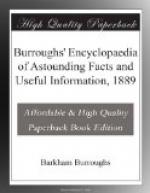[Illustration: (coils)]
The following three exercises embrace the essential elements in capital letters, and should at first be made large for purposes of movement:
Capital O, down strokes parallel.
[Illustration: O Q O Q O O Q O Q O]
Capital stem. Down stroke a compound curve. Shade low. Finish with a dash.
[Illustration: d d d d d d d d d]
Capital loop. Curves parallel. First curve highest.
[Illustration: O O O O (double overlapping loops)]
Having succeeded to some extent with these exercises, the learner may next undertake the vertical movement. In order to obtain the lateral movement, which enables one to write long words without lifting the pen, and move easily and gracefully across the page, exercises like the following should be practiced:
Down strokes straight. Even and resting on line.
[Illustration: uuuuuuuuuuu]
In all movement exercises the third and fourth fingers should slide on the paper, and the finger movement should be carefully avoided. The different movements having been practiced, they may now be combined in various forms.
[Illustration: u u u u u n n n n n]
Lateral and rolling movement combined. Vertical movement and rolling movement combined.
[Illustration: t t t]
Do not shade the circles. Lines should be parallel.
Movement exercises may be multiplied almost indefinitely by studying the forms used in writing and their combinations. Repeating many of the small letters, such as m, u, e, r, s, a, d, h and c, also capitals D, J, P, etc., forms an excellent exercise for the learner.
PRINCIPLES IN WRITING.
In order to enable the learner to examine, analyze and criticise his writing, the following principles are given as his standards of measurements and form. By combining them in various ways the essential part of all letters in the alphabet may be formed.
[Illustration: (eight common strokes)]
The principles must be first carefully studied, and separated into the primary lines which compose them and the form of each principle well understood. The student may then form a scale like the one following, by dividing the distance between the blue lines on the paper into four equal spaces, with a lightly ruled line. The letters of the small alphabet should then be placed in the scale and the [Transcriber’s Note: The original text reads ‘hight’] height of each letter fixed in the mind.
[Illustration: (lowercase cursive alphabet)]




